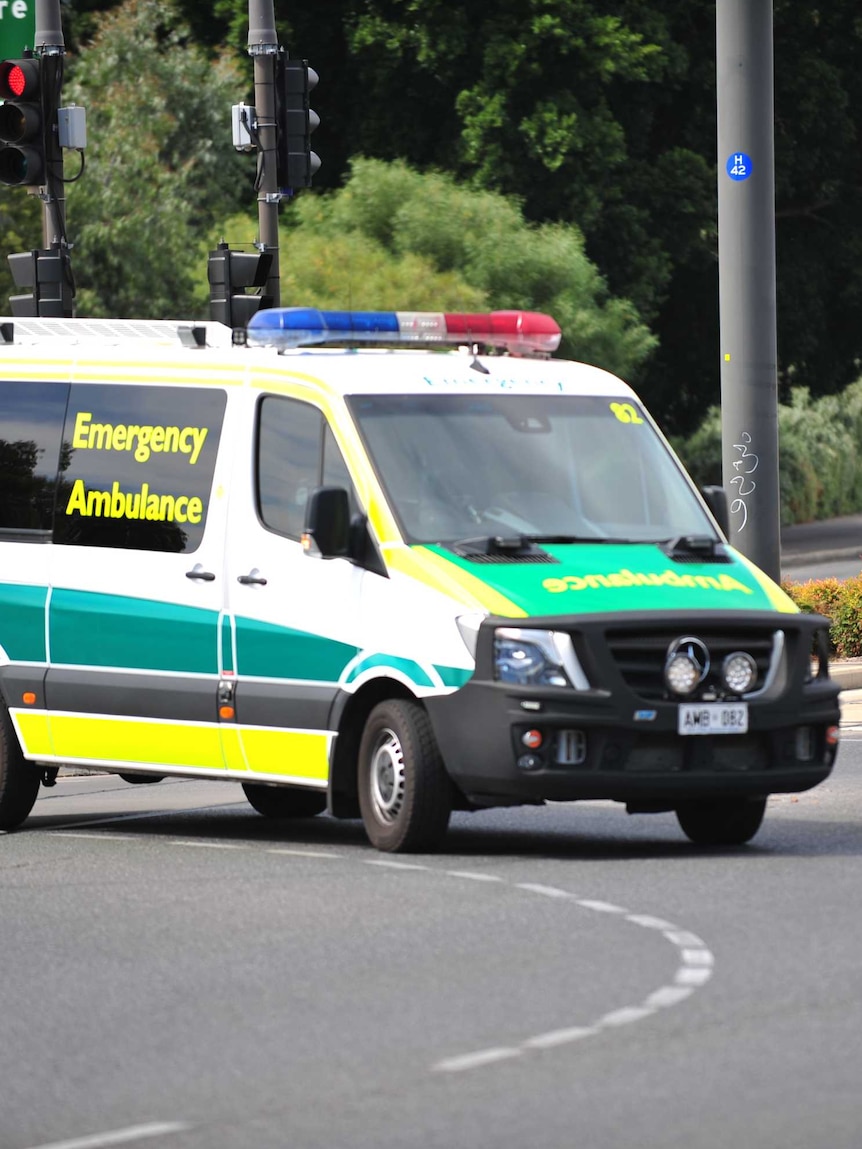South Australia’s ambulance service has missed its own target for responding to patients in life-threatening conditions for the first time.
Key points:
- The service failed to meet its target for responding to the most critically ill patients last financial year
- It is the first time it has happened
- The service aims to get to priority 1 cases in eight minutes 60 per cent of the time
The latest annual report from the South Australian Ambulance Service (SAAS) states that ambulances should get to critically ill patients within eight minutes 60 per cent of the time.
In the past financial year, SAAS missed that target by 1 per cent. It is the first time it has fallen short.
By comparison, the target was exceeded by more than 10 per cent in the previous financial year.
The service also missed its target for priority 2 patients, referring to potentially life-threatening cases, by nearly 40 per cent last financial year.
The report states while there had been “a decrease in response times for priority 2, SAAS is performing as expected considering the sustained growth in emergency workload and ambulance capacity issues”.
SAAS chief executive officer Rob Elliott said the service faced “extraordinary pressures” in the past year.
“Despite striving to meet targets, SAAS experienced deteriorating ambulance response times, missing key performance target for priority 1 patients by 1 per cent, also falling short in meeting priority 2 targets,” he said.
“I acknowledge that this needs to be improved to meet the needs of the community and particularly for our high-priority patients.
“There is no denying that it is upsetting for both our staff and our patients when community expectations are not met.”
Mr Elliott said he was “optimistic that response times will steadily improve” as an extra 350 ambulance officers join the service, including 33 paramedics in the coming days.
The Ambulance Employees Association SA’s Josh Karpowicz said the figures showed a “healthcare system under considerable strain and pressure” and an “ambulance service that is struggling”.
“It’s incredibly disappointing but it’s a reflection of what our members are reporting to us,” he said.
Mr Karpowicz said the service’s priority 1 target was already low and it was concerning that it was not being met.
“Priority 1 response times are the most critical response target for the ambulance service,” he said.
“They are patients in cardiac arrest, not breathing and require CPR and immediate assistance. And it’s incredibly distressing that we’re not meeting that response time target.”
SA Health Minister Chris Picton said the figures “highlight the system we have inherited” and said the government was “even more determined to improve ambulance response times and care for all South Australians”.
“We are giving paramedics the resources they need to do their job and building the hospital capacity to get them off the ramp and delivering timely care to patients,” he said.
Mr Karpowicz said the state government’s funding commitments were “so desperately needed” but it would take time to improve capacity and train new paramedics.
“Ambulance resources is one of the major factors and it has been for many years … the second problem is ramping at our hospitals.
“Those numbers are still unacceptably high.”




